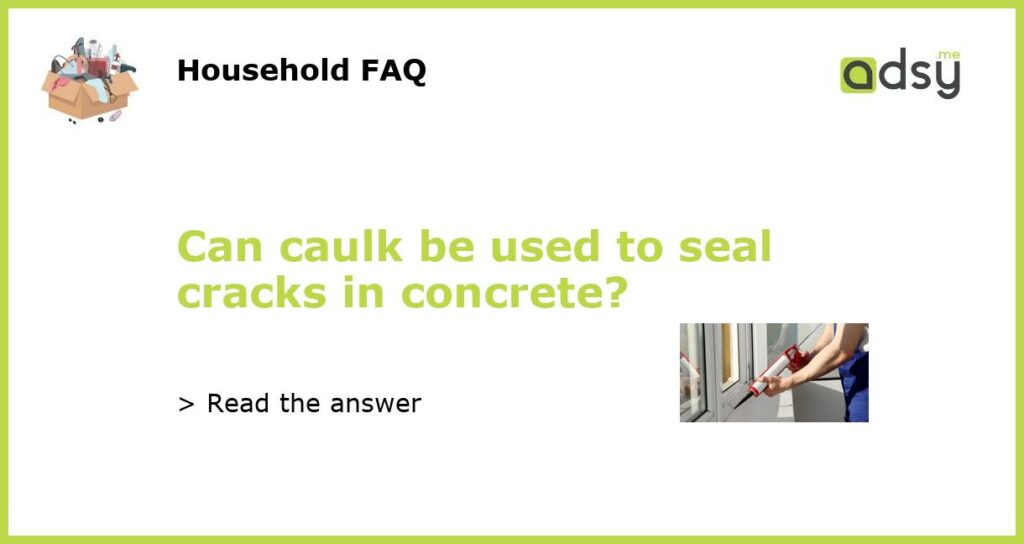Yes, caulk can be used to seal cracks in concrete.
Cracks in concrete can not only be unsightly, but they can also lead to more serious structural issues if left untreated. One of the easiest and most effective ways to seal cracks in concrete is by using caulk. Caulk is a flexible material that can be applied to cracks in concrete to fill in the gaps and prevent further damage. In this article, we will explore how caulk can be used to seal cracks in concrete, the different types of caulk that are suitable for this application, and some tips for achieving the best results.
Types of caulk for sealing cracks in concrete
When it comes to sealing cracks in concrete, there are several types of caulk that can be used. The type of caulk that is most suitable for the job will depend on the size and severity of the cracks, as well as the type of concrete being sealed. Here are some of the most common types of caulk used for sealing cracks in concrete:
Polyurethane caulk
Polyurethane caulk is a popular choice for sealing cracks in concrete because it is extremely flexible and durable. It can expand and contract with temperature changes, making it ideal for outdoor applications. Polyurethane caulk is also resistant to water, which makes it a good choice for sealing cracks in areas that are exposed to moisture, such as basements or bathrooms. However, polyurethane caulk can be more difficult to work with than other types of caulk, as it requires a special adhesive to stick properly.
Acrylic latex caulk
Acrylic latex caulk is another common choice for sealing cracks in concrete. It is easy to work with, dries quickly, and can be painted over once it has cured. Acrylic latex caulk is suitable for smaller cracks and is a good choice for indoor applications. However, it is not as flexible as polyurethane caulk, so it may not be the best choice for larger or more severe cracks.
Silicone caulk
Silicone caulk is a versatile option that can be used to seal cracks in both concrete and other materials. It is known for its durability and resistance to water and weathering. Silicone caulk is also highly flexible, making it a good choice for sealing larger cracks or cracks that may experience a lot of movement. However, silicone caulk is not paintable and can be more expensive than other types of caulk.
Tips for using caulk to seal cracks
Sealing cracks in concrete with caulk is a fairly straightforward process, but there are a few tips that can help you achieve the best results:
1. Clean the crack: Before applying caulk, make sure the crack is clean and free of any debris. Use a wire brush or a vacuum cleaner to remove any loose material from the crack.
2. Apply the caulk: Cut the tip of the caulk tube at a 45-degree angle and insert it into a caulk gun. Squeeze the trigger to apply a thin, even bead of caulk along the crack. Make sure the caulk fills the entire crack and creates a seal.
3. Smooth the caulk: Use a caulk smoothing tool or your finger to smooth the caulk and create a neat finish. This will also help ensure a good seal.
4. Allow the caulk to dry: Refer to the manufacturer’s instructions for the recommended drying time of the caulk. Typically, acrylic latex caulk will dry within a few hours, while polyurethane and silicone caulk may take longer.
5. Paint if desired: If you are using acrylic latex caulk and wish to paint over it, make sure the caulk is fully dry before applying paint. Use a paint that is suitable for use on caulk.
In conclusion, caulk can be a great solution for sealing cracks in concrete. Whether you choose polyurethane, acrylic latex, or silicone caulk, following these tips will help you achieve a successful and long-lasting seal. It is always a good idea to consult with a professional if you have any doubts or concerns about sealing cracks in your concrete.

